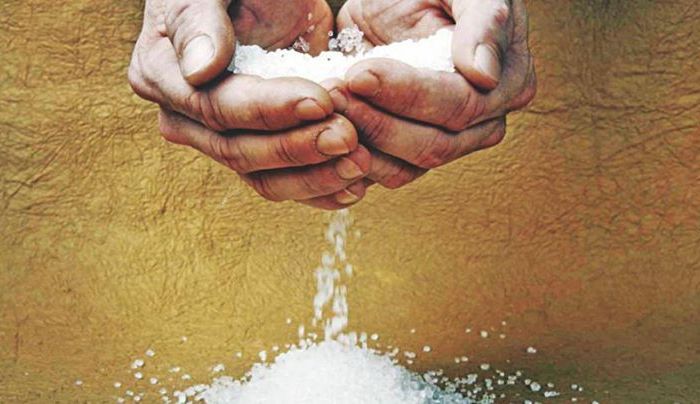Echoes 36. A Salty History
BY Asrar Chowdhury
Shout, The Daily Star, Thu Jul 30, 2015
http://www.thedailystar.net/shout/echoes/salty-history-118789
Where would we be without salt? In ancient Rome, we wouldn’t earn a salarium. Salt derives from the Latin sal (and thus salary). The Romans used to pay their soldiers in salt. They put salt in all of their sauces and called it salsa (salty). The French got rid of the ‘l’ and called it sauce. The Spanish kept the ‘l’ and danced the salsa. The Romans called salted meat salsicuss. The French called it saucisse, from where we get sausage in English, while the Germans decided to call their thinly cut salted pieces of meat salami. Our relation with salt is more than just salacious, which also derives from salt.
Today we take salt for granted. We can produce salt in factories anywhere in the world. This wasn’t the case in ancient times. There are only two natural sources of salt: sea salt and rock salt from salt mountains. Natural sources of minerals are either limited in supply where found or are not available at all in some places. Before refrigeration, salt was vital for preserving food to be eaten when there was no harvest. The Arabs would use salt to dry meat. People in Bengal would use salt to dry fish. People in Northern China and Mongolia would use salt to dry vegetables. This usefulness of salt in preserving food had two consequences. #Shout First, rulers had to make sure they could control the production and sales of salt. Second, rulers had to ensure its supply during wars.
Before World War I, armies had mules, horses, and elephants. Army generals needed salt to feed the animals and to preserve food for the troops. If one army could deny the opponent salt, their chances of winning would increase. One factor behind why the Northerners won the US Civil War of the 1860s is they could deny the Southerners access to salt. When Napoleon retreated from Russia in 1812, many of his troops and animals died on their return because the French army ran out of salt.
There was a time not too long ago that salt taxes were a part of life. The Ottomans of today’s Turkey realised the strategic importance of salt. Salt producing villages in the empire were exempted from paying cash taxes. Rulers of other empires weren’t as wise as the Ottomans. Salt was one of the factors why the British had to leave their “Jewel in the Crown,” India.
Ancient India was no stranger to salt taxes. However, these taxes went beyond the tolerance of the public from the times of the East India Company. The British Salt Act allowed only the British to produce and sell salt. Indians were forced to buy salt from the British with a high tax. The Salt Tax hit the poor the most because salt was a vital ingredient of their diet. On March 12, 1930, Mahatma Gandhi marched peacefully with a handful of followers from his Sabermanti Ashram in Ahmedabad. As they passed from one village to another, more and more people joined. By the time The Mahatma reached the coastal town, Dandi, on the Arabian Sea on April 5, there were tens and thousands of followers peacefully protesting against the unjust Salt Tax. The rest was history.
The people of Persia (Iran) have a custom that crept into our culture. If you accept salt (namak) from someone at dinner, even if that person is your enemy, you don’t harm the person (namak haraam). For dessert, let’s finish off with the British. Read this with a ‘pinch of salt’. Find out the rest for yourself. Don’t completely believe everything you read.
Asrar Chowdhury teaches economic theory and game theory in the classroom. Outside he listens to music and BBC Radio; follows Test Cricket; and plays the flute. He can be reached at: asrar.chowdhury@facebook.com
